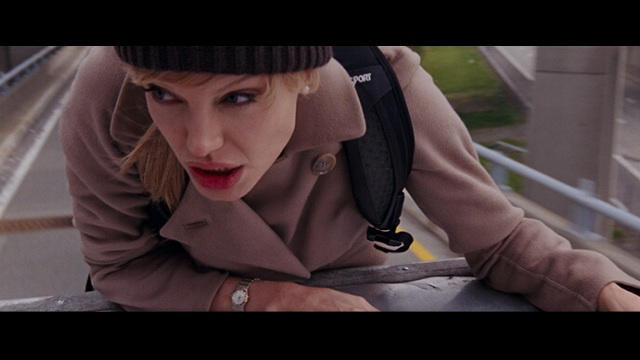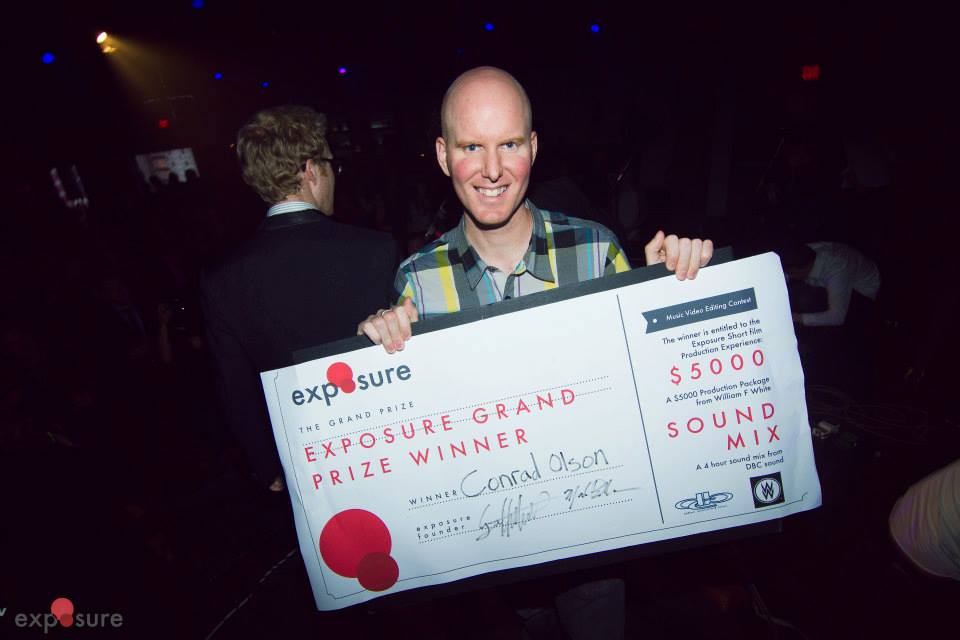This is probably one of the hardest paint shots that I’ve had to do. The rope is slack so it flaps all over Angelina’s jacket and face. There is a lot of movement and some drastic lighting changes, which made it almost impossible to track in patches, but the movement isn’t fast enough to hide any mistakes in the paint work.
I used Silhouette to paint the wire out frame-by-frame over her jacket, hands and face. I had some help from Katarzyna Ancuta who tracked in patches for the roof of the truck and recreated Angelia’s shadows. I then combined our two clean plates in Shake.
I was working on this shot at the same time as Avatar was in progress so I didn’t spent all day every day on this but it did take me 5 weeks.
You can read a much more detailed explanation of my frame-by-frame painting technique here.




I’m Impressed! The lighting changes alone would have made that a nightmare I’m sure- but the fact that the jacket is light, it goes over her face and like you say isn’t quick enough to hide mistakes makes it all the more impressive. It reminds me of a paintout that my missus did through a room full of billowing feathers. Makes you think- was it so dangerous to have her just climb up the thing that it warranted someone spending 5 weeks to undo what they did on set? I’m sure who ever deals with the insurance for the shoot thought so!
Amazing work. Im a little confused about how to add silhouette into my workflow. I shoot raw with BMCC camera, edit shooting proxies in premiere and grade using resolve and composite in After effects. I just wanted to know how to add silhouette without losing quality. Any help will be much appreciated. thanks
Hi Jason. Once you have edited with your proxy files do you link back to the raw files before working in Resolve and After Effects? If you do then I would use the same raw files in Silhouette if it can read them.
If it can’t read them then I would probably use something like After Effects (or the software that comes with the camera, I don’t know much about Blackmagic Cameras) to convert the files to DPX files. Apprently there are stability issues with EXR files in Silhouette. I don’t know if that was just something that was happening at the setup at work.
If you convert your files into another format it is important to make sure that you don’t clip any colour values, especially if your raw files have a high dynamic range. Before you do any painting in Silhouette do a round trip test. Convert the raw files into DPX, bring them into Silhouette, make sure your Silhouette project is set to 32bit float, render back out of Silhouette to DPX and bring them back into After Effects or Resolve and compare them to the RAW files. Make sure you check the image at extreme gamma and exposure levels to make sure you aren’t clipping any values at any point.
Once you know you have got the conversion right then you can paint away in Silhouette.
I will try that Conrad. Thanks for the help. Unfortunately Silhouette doesn’t work with any form of raw files(which is a huge limitation). I just don’t understand how a program which was used in huge blockbuster films be limiting in functionality. I havent worked much with dpx files before but I think I’ll have to transcode down to 10-bit footage. I am just hoping trans-coding is worth it to be able to roto and paint in Silhouette. Anyways your CV is very impressive, and best of luck with future projects. Thanks again for taking the time to reply .
A question if you have any suggestions. I am personally shooting a short film soon and I need to remove all shadows from an actor (throughout the short), Would you agree the best way would be to shoot Raw stills for clean plate to use to paint in later for the shadows.
(this seems as if work for static shots but not sure how it would turn on for moving dynamic shots)
The VFX pipeline for big movies usually involves converting all of the footage into DPX or EXR files to work on, regardless of what camera was used. There are so many steps and pieces of software used that it is easier to just have a couple of file standards that will be consistent.
Also, the raw camera formats are often heavier to process, so it is good to convert them into something else.
When you create a 10bit DPX file the software should do a standard colour space conversion and will convert the DPX to log colour space. Depending on how the software deals with it, it could look very washed out and low contrast. This is ok, it is a way of keeping the full dynamic range but in a 10 bit file. It is how DPX files usually work.
As long as Silhouette is setup correctly if should display the image correctly and render it back out the same way.
As for your short movie, painting out shadows is often tricky. Are you talking about shadows cast onto the actor from other object, or self occlusions shadows, like the shadows in his eye sockets?
Either way, I would definitely try to colour correct them out, rather than painting them out. You can try to pull luma keys of the shadows and using those mattes to lift the exposures in the area. Or you might have to resort to rotoscoping the shadows.
I would try to come up with some lighting solutions on set to limit the work you have to do.